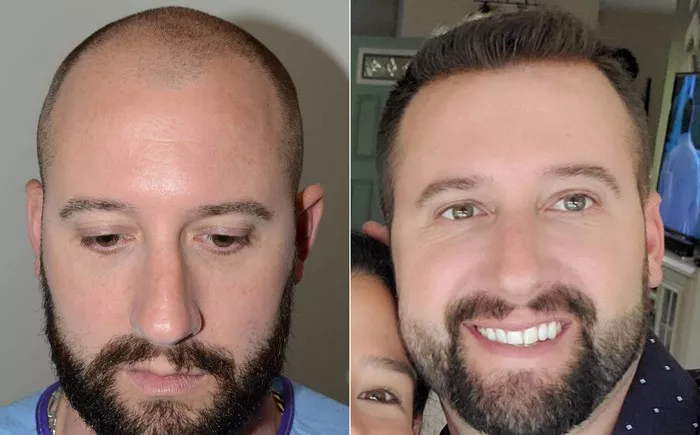In the world of hair transplantation, patients often find themselves concerned about the phenomenon known as “shock loss.” This post-operative occurrence can be a source of anxiety for those seeking a luscious head of hair through the miracle of modern medicine. In this article, we’ll delve into the intricacies of shock loss after a hair transplant, offering valuable insights into its duration, causes, and ways to minimize its impact. Understanding shock loss is crucial for anyone considering this transformative procedure.
What is Shock Loss After a Hair Transplant?
Shock loss, also known as telogen effluvium, is a common side effect following hair transplantation surgery. It refers to the temporary shedding of native or transplanted hair in the recipient area. This phenomenon may seem counterintuitive, especially when the primary goal of a hair transplant is to gain more hair, but rest assured, it’s a natural part of the healing process.
Duration of Shock Loss
One of the most pressing questions for individuals who have undergone hair transplant surgery is, “How long does shock loss last?” Well, the duration can vary from person to person. Typically, shock loss occurs within the first few weeks post-surgery and can last anywhere from one to six months. However, it’s important to note that the hair loss is temporary, and new hair growth will eventually replace the lost hairs.
Causes of Shock Loss
Understanding the causes of shock loss is crucial in managing expectations and anxiety. Here are some factors that contribute to this temporary hair shedding:
1. Surgical Trauma:
During a hair transplant procedure, tiny incisions are made in the scalp to insert the grafts. This trauma can trigger the adjacent hairs to enter the telogen (resting) phase prematurely, leading to shock loss.
2. Post-Surgery Stress:
The body goes through significant stress during surgery. This stress can impact the hair growth cycle, causing hair to shed.
3. Individual Variability:
Each person’s hair and body react differently to surgery, making the duration and extent of shock loss highly variable.
Managing and Minimizing Shock Loss
While shock loss is an inevitable part of the hair transplant process, there are strategies to minimize its impact and hasten the recovery of your hair. Here are some effective tips:
1. Follow Post-Operative Care Instructions:
Your surgeon will provide specific post-operative care instructions. Adhering to these guidelines is crucial for a smooth recovery.
2. Be Patient:
Understand that shock loss is temporary. Be patient and give your hair the time it needs to recover.
3. Use Minoxidil:
Some patients find success in using over-the-counter minoxidil products to stimulate hair growth and minimize shock loss.
4. Nutritional Supplements:
A balanced diet rich in vitamins and minerals can promote hair growth. Consider adding supplements like biotin and zinc to your daily regimen with your doctor’s guidance.
When to Seek Professional Help?
In most cases, shock loss resolves on its own as the hair growth cycle naturally resumes. However, if you notice persistent or excessive hair loss beyond six months post-surgery, it’s advisable to consult your hair transplant surgeon. They can evaluate your condition and recommend additional treatments if necessary.
See Also: Can I Lift Weights After Hair Transplant: A Quick Guide
Conclusion
In the journey to reclaiming a full head of hair through a hair transplant, understanding shock loss is vital. This temporary phase can be a concern, but with the right knowledge and patience, you can navigate it successfully. Remember, shock loss is a sign that your body is adapting to the changes, and it will eventually give way to the beautiful, permanent results you desire.
In conclusion, shock loss is a transient setback in the path towards a lush head of hair, but it’s a testament to the body’s remarkable ability to heal and regenerate. By following proper post-operative care, maintaining patience, and seeking professional guidance when necessary, you can minimize the impact of shock loss and enjoy the long-lasting benefits of a successful hair transplant procedure.


